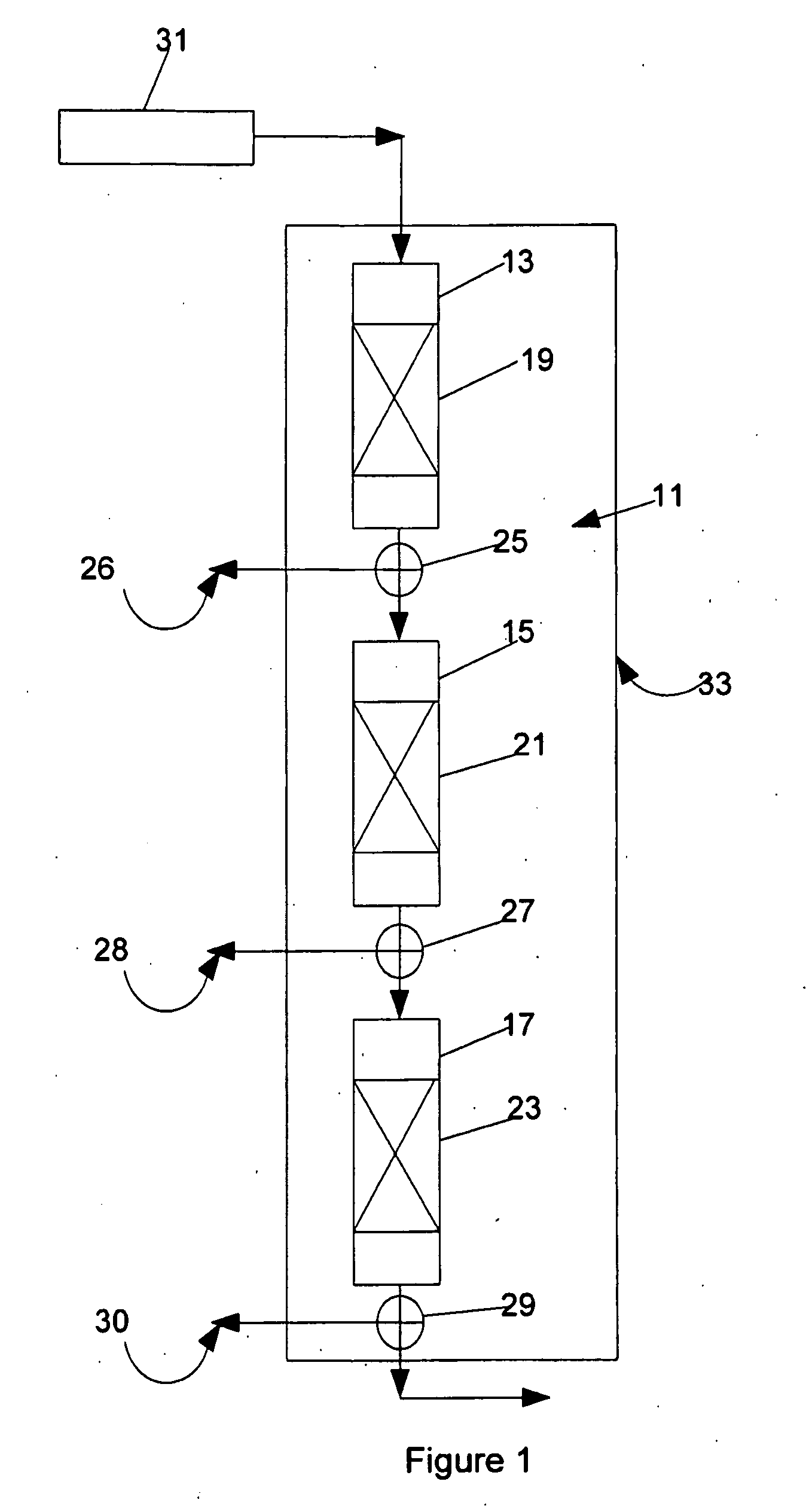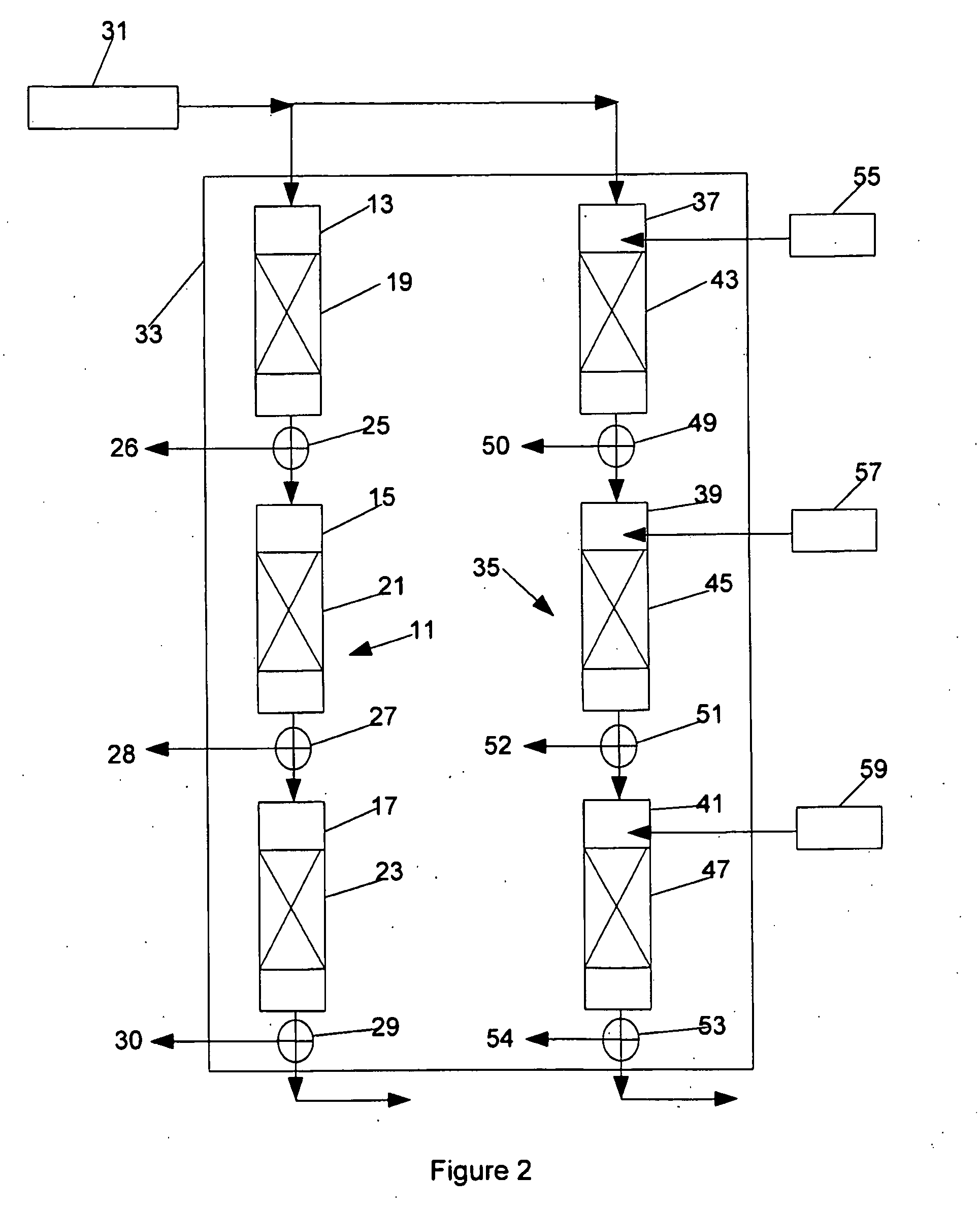High throughput propylene from methanol catalytic process development method
a technology of propylene and methanol, which is applied in the direction of catalyst regeneration/reactivation, physical/chemical process catalysts, bulk chemical production, etc., can solve the problems of sequential approach that typically takes over three years to complete, low reaction rate, and selectivity loss, and achieve high propylene productivity and selectivity, and low cost
- Summary
- Abstract
- Description
- Claims
- Application Information
AI Technical Summary
Benefits of technology
Problems solved by technology
Method used
Image
Examples
Embodiment Construction
[0039]In the conversion of methanol and / or DME to propylene, it is desirable to the extent practicable to maximize the productivity and selectivity to propylene and the ratio of propylene to ethylene, and to minimize the production of higher molecular weight (C5+) hydrocarbons. It is also important to minimize to the extent practicable the deactivation of the zeolite containing catalysts in the series-connected plug-flow reactors used in the process. An important component of this deactivation results from the carbon overlayer formation on the catalyst surface. The degree of difficulty involved in regenerating the zeolite containing catalysts by removing the carbon overlayer is also an important consideration in the commercial scale catalytic conversion system design.
[0040]The inventors have found that, in the conversion of methanol and / or DME to propylene in a plug-flow reactor system that includes a plurality of series-connected plug-flow reactors having catalyst beds preferably c...
PUM
| Property | Measurement | Unit |
|---|---|---|
| Pressure | aaaaa | aaaaa |
| Volume | aaaaa | aaaaa |
| Electric charge | aaaaa | aaaaa |
Abstract
Description
Claims
Application Information
 Login to View More
Login to View More - R&D
- Intellectual Property
- Life Sciences
- Materials
- Tech Scout
- Unparalleled Data Quality
- Higher Quality Content
- 60% Fewer Hallucinations
Browse by: Latest US Patents, China's latest patents, Technical Efficacy Thesaurus, Application Domain, Technology Topic, Popular Technical Reports.
© 2025 PatSnap. All rights reserved.Legal|Privacy policy|Modern Slavery Act Transparency Statement|Sitemap|About US| Contact US: help@patsnap.com



